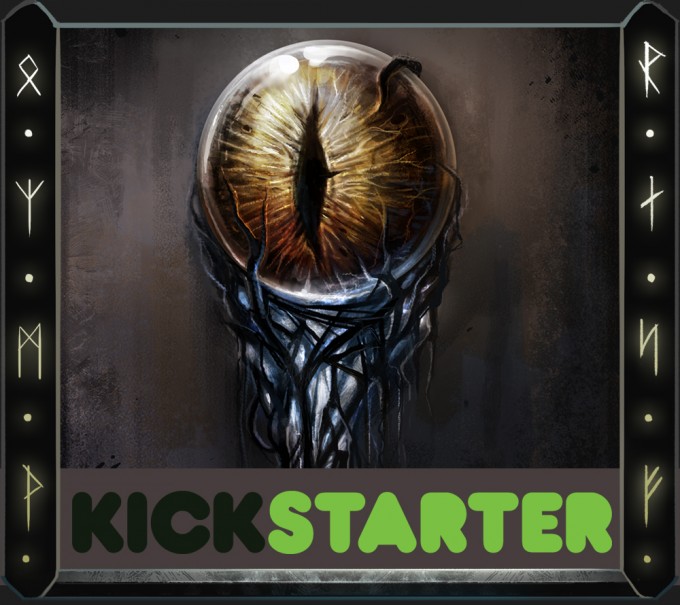
[KS Update] Afternoon Update April 21, 2013
Folks,
From what I can tell, you are enjoying Michelle’s live streaming today, great! Thanks for taking time out of your day to participate in her event.
Yesterday was a big day for all of us, both backers and CSE unlike. We unveiled our plans for the one of, if not the most innovative building & crafting system in an RvR MMORPG to date. Over the next two days I am going to outline some additional features of the system. Here’s Part One; Part Two will be posted tomorrow.
Enjoy the rest of your Sunday (unless of course it is already Monday in your part of the world!).
-Mark
Building a world – Part One
The world of Camelot Unchained has gone through an extinction-level and it needs a lot more than a few new screen doors; in other words, it’s a real fixer-upper! With the piercing of the Veil and the Veilstorms that followed, essentially, this world was paved over. Thus, one of the goals of our building, crafting and mining systems is to give players that to create the structures that they need to build a new world out of the rubble of the old world.
To understand how this is going to work, we have to start with the concept of cells. Cells are the building blocks of the world, similar to the blocks in Minecraft™ or pieces in Lego™ and other games. Our cells are different though not only size from Minecraft (they will be at least ½ the size) but in other ways as well. These cells can be placed down in the world in the same manner that blocks are placed down in other games, individually or in groups (Prefabs). Cells are perfect for the builder that wants a free-form building method of improvisation. However, instead of having to build the entire world one cell at a time, builders can also choose to use prefabs to help speed up their building time.
Prefabs are constructs made up of a group of cells that the players can also place down in the world. Unlike cells, prefabs
- Are not solid and/or filled.
- Can be made by combining cells.
- Prefabs can be added to other prefab to create a new prefab.
- Simple Rotations – Major cardinal directions only.
Using both cells and prefabs players can build structures throughout most of the world (you can’t build in certain parts of the main cities and other locked locations). Crafters/builders can create the cells, prefabs, etc. are used by players. These come from mines and other resource producing areas. For the purposes of this document, let’s just focus on mines.
Mines are going to be one of the primary sources of materials for builders. They come in all shapes and sizes and they are filled with various raw materials. Players can enter these mines and gather the materials; they can also dig shafts looking for new veins. Unlike mines/nodes found in most MMORPGs, these mines are not meant to be mined out quickly by one or even a few players. Additionally, to help encourage realm pride, we will design these mines to be mined cooperatively by players. Think of the gold mining scene in the film “The Hobbit – An Unexpected Journey” for reference.
Since Camelot Unchained is an RvR game, we have to be careful with the amount of digging and tunneling we allow players to do. After all, if we allowed players to simply dig wherever they wanted, the game would quickly turn into “Tunneling Unchained” instead of Camelot Unchained Also, unlike some other games, digging through the ground is not instantaneous or easy, so like in “The Great Escape” don’t expect to easily tunnel out of trouble and into freedom. To prevent players from all doing their best imitation of the gopher in “Caddyshack” I introduced the concept of bubbles into the design.
Bubbles are areas that exist below the surface of the world. These bubbles can be of different sizes but are totally self-contained and while you can dig throughout them, you will eventually reach the wall of the bubble. Once you do that, you cannot dig any further with or without magical help unless, of course, we allow that to happen (open up a new bubble/mine). This helps prevent players from using the mines as a way to tunnel into enemy territory and simply pop up under the enemy’s structures. Now, I’m not saying this can’t happen because we may want to use this concept to have hidden paths that can be discovered by the players but players should expect this to happen very often. Also, Bubbles are contained within the “zone” structure of Camelot Unchained. They are not individual instances but simply zones that players move in and out of as they pass through the mine entrances.
Players can control mines through the territorial control system of Camelot Unchained. In order to help foster realm pride, owning most mines doesn’t give total control of the mine to a player or guild but rather it yields a “piece of the action” to he player or guild that controls it. This will reward the player or the guild for discovering and controlling the mine but not harm realm pride because it encourages, rather than discourages, cooperation between players and guilds. Some mines, because they are either too small or too large will allow for control by an individual or the realm itself but these are in the minority.
Mines, since they are persistent and non-instanced, can also be set up with traps and other devices to protect it from attack by the other realms. Additionally, like other structures in Camelot Unchained, in times of strife, the side that controls them can destroy these mines.
Overall, the key features of mining in Camelot Unchained are:
- Mines are bubbles that are contained within separate world zones.
- Long lasting, not simply “hit with a hammer a few times and watch them disappear” types of mines.
- Mines are meant to support many players unlike traditional MMO mines.
- More players/miners = more bonuses (more on this in the cooperative play section).
- Overall design encourages realm-mates working together and helps build Realm Pride rather than discouraging it
- Mines can be claimed.
- Small mines can be claimed by individuals, groups and guilds.
- Large mines can be claimed by the realm as well and shared with players.
- Mines can be protected – i.e.: traps and defenses. Collapsible – Can heavily damage them to prevent easy reuse by the enemy.
COOPERATION
Another aspect of these systems that will set it apart from the crowd is the introduction of cooperative play into the building, housing and mining system. We will both encourage players to work together and at the same time, create mechanics to reduce the likelihood of elements of our systems harming Realm Pride. One of these elements is how we are going to use positive reinforcement through cooperative play.
First, while players can own and control plots of land, they can also give permission on these plots to other people to allow them to build on them at the same time. While this will certainly lead to some mischievous behavior at times, the time, energy and cost of carrying out this behavior will help discourage some potential griefing both by friends and other members of their realm.
Secondly, as I explained in the video, our mines are not going to be short duration, one-at-a-time affairs. Our mines are more realistic in that are designed to be used by lots of different miners over time. As a matter of fact, while multiple miners will indeed deplete the resources more quickly, the miners will also get a bonus for working together.
Thirdly, players will also gain building “speed bonuses” for working together on structures. While 50 crafters cannot put up a huge wall instantly, the work will go much faster if they work together. Cooperative play will also be encouraged through the use of caravans and other ways to get both crafters and materials to the front lines. We will also explore the concept of allowing players to act as foremen on projects to help speed things up, add some additional quality/durability/etc. High-level crafters and builders will also be able to speed things up by hiring NPC helpers for some tasks.
In summary, cooperative play in Camelot Unchained’s building system has the following planned core components:
- Players work together to build structures, mine, etc.
- The more crafters involved, the more benefits will scale till max.
- All plots have permissions to allow other players to build/help build a structure on a plot. Plots
- Plots can decay/degrade overtime if not kept up (Possible – time and/or monetary costs).
- Players risk of losing plot ownership if player doesn’t maintain properly.
- Bring in Prefabs and/or Material/Resources to help build a structure.
- Possible use of foremen on projects, mines, etc.
- Possible “Can I help” coordination, permissions, etc.
- Possibly allow control of NPCs to speed up some activities for high-level crafters/builders/
- Upgrades – any player can contribute to upgrading a structure (wood -> stone -> metal -?)
- Constructs can evolve over time.
That’s all for Part One!



